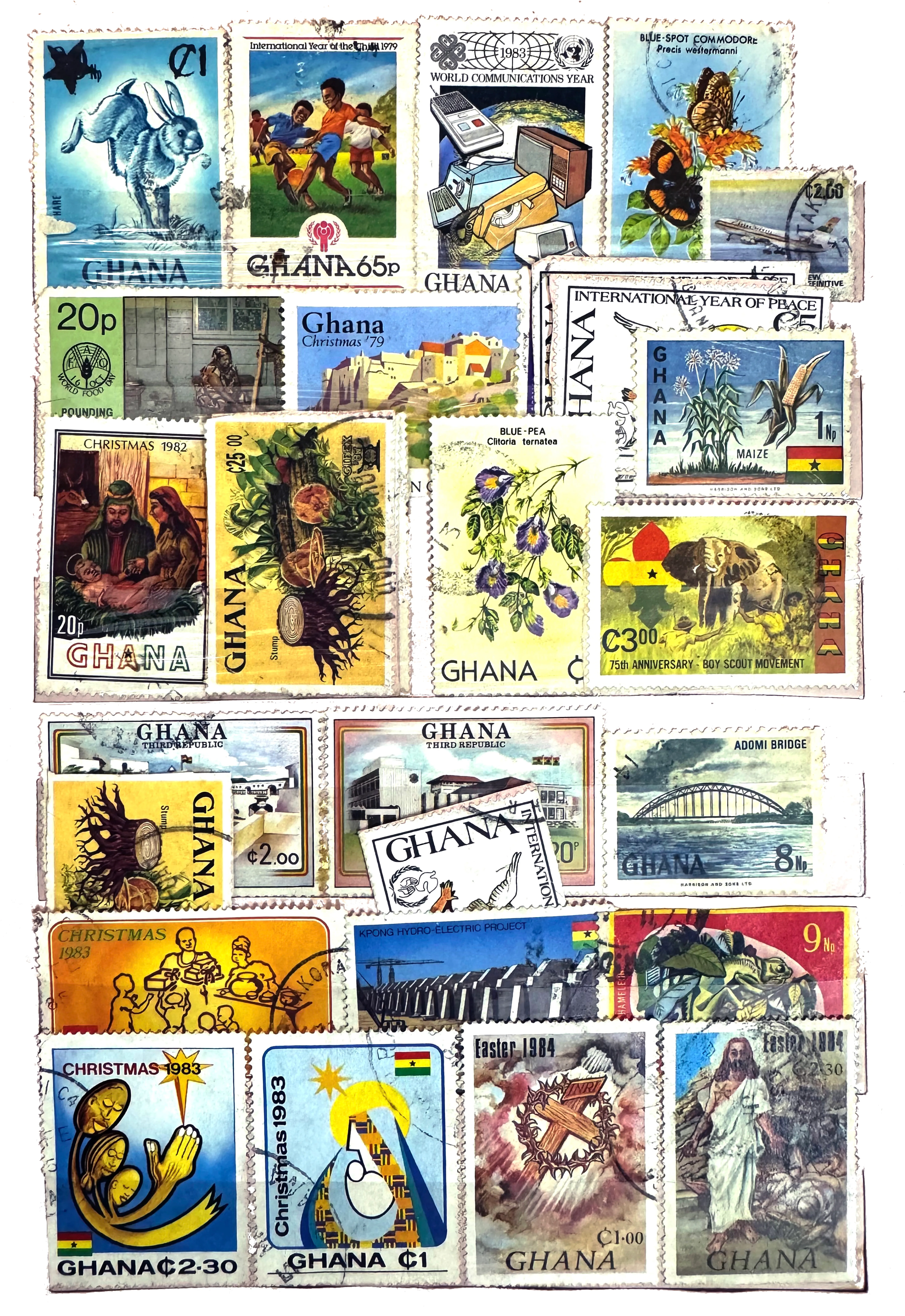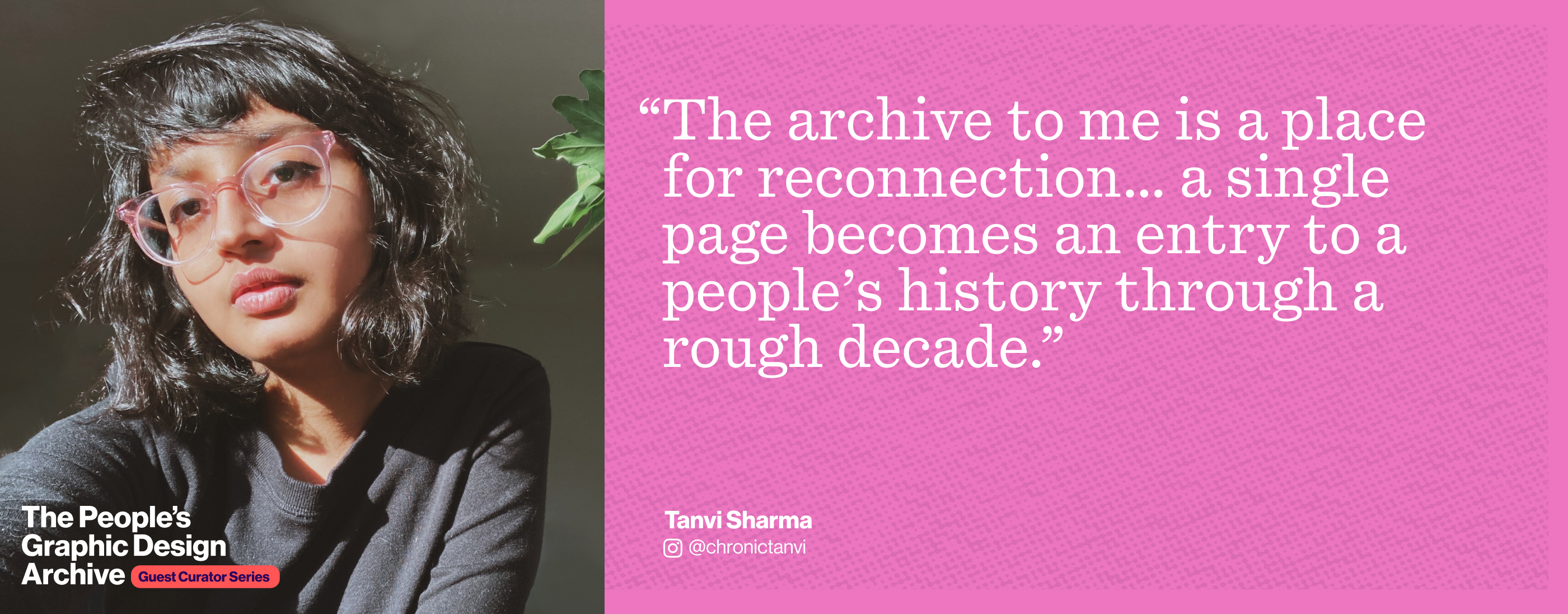Guest Curator Tanvi Sharma


Stamps from Ghana sent to India, 1980s
Stamps from Ghana
Tanvi Sharma is a designer and research based in Brooklyn, New York. Here, she shares a few favorites from the Archive and how it inspired connections with her family's history
The archive to me is a place for reconnection. I wanted to contribute to the archive and write about why these particular stamps interest me. In the 1980s, my paternal grandfather’s best friend was stationed in Ghana. The Indian Railways had been contracted for an assignment in Ghana’s evolving landscape. His friend’s daughter (I call her my aunt) lived with him in Lucknow, India, and would often receive letters. She tells me these were tumultuous times for Ghana, with unprecedented inflation, and she was grateful to receive news from her parents. The first time she got mail, my grandmother requested she give the stamp to my grandfather, and she continued to do so through the years. 3 years after my grandfather’s death, I found this page in his stamp book. I don’t know the history of most of the stamps in his collection, but this particular page had an obvious connection.
I promptly contacted my aunt about these to confirm they were from her dad. She affirmed, “Those were no cell phone or email days and all contact was via letters. All the letters I used to get I used to faithfully hand over the stamps to your dads. Cool that they are still around. Maybe some are worth some money?”.
And so, a single page becomes an entry to a people’s history through a rough decade. I’d never been to Ghana or studied it, hence I tried to research what I could from this assortment of stamps. What was happening in the years they were published? How does the currency change? The pricing on the stamps ranges wildly, from ₵25 to 20p and everywhere in between. The content of the stamps is also varied, with a majority being nature-themed. (My grandfather was an avid gardener, and seems to have taken a liking to collecting flora and fauna throughout the collection). Some of the stamps seem to be specifically Christmas-themed, the holidays being the prime time to catch up.
My grandfather’s friend was in Ghana from roughly 1978 to 1985. The third stamp in the first row is from 1983. The meta nature of this stamp for World Communications Day is funny to me. Here is my grandfather talking with his friend, via stamp, a communication technology that isn’t hinted at in the illustration on the stamp itself, and yet is the medium.
The currency on the stamps seems to jump around. Usually, on the top right or left corner, the currency is denoted with a p (20p, 65p), referring to pesewa. In later stamps, this shifted to Np indicating the introduction of the new pesewa (6Np, 10Np, and so on), an effort to reform the currency at a time of high inflation and deteriorating currency.
One Cedi is divided into one hundred Pesewas. Thus, in other places, the stamps are valued in Ghanian Cedi (₵). On further philatelic research, I found the same stamps from my grandfather's collection with an additional ‘₵50’ stamped on them. The stamp has been graphically adapted to have a surcharge (an additional marking or overprint) as a response to inflationary pressures. Instead of printing new stamps with updated denominations, existing stamps can be overprinted with a new value to reflect changes in postal rates or currency devaluation — making them distinct from the standard issue.
As I close the pages of my grandfather's stamp book, I am struck by the profound journey these small pieces of paper have taken me on. What began as a simple curiosity about my family's past has unfolded into a deep exploration of history, memory, and connection. For me, this insight through utility is the core charm of graphic design history. It’s interesting to me to take an autoethnography and use it as a starting point for finding more about the collections these stamps belonged to, and the socioeconomic conditions under which they were produced, revised, and used. But beyond the historical significance lies a more personal revelation. These stamps are not just artifacts of the past; they are tangible reminders of the lives that have touched mine. Each time a stamp is used, a new story unfolds. In the intricate designs and faded colors, I find traces of my grandfather's love for gardening, my aunt's longing for home, and the enduring bond that connects us across generations. I’ll surely be returning to my grandfather’s archive for more.




